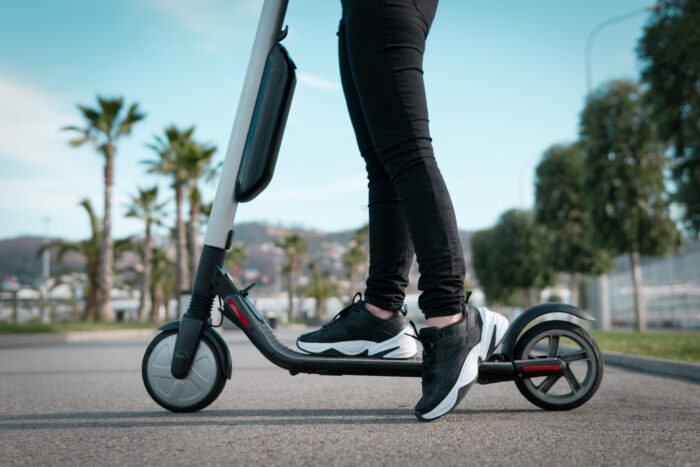Getting from point A to B shouldn’t drain your wallet. With prices climbing, smarter choices matter more than ever.
Fortunately, there are plenty of budget-friendly ways to move around these days. From tech-savvy rides to classic methods, the options are varied and effective. The key lies in finding the right fit without sacrificing comfort or convenience. So, what are the most wallet-friendly ways to move around?
Electric Scooters: Compact and Cost-Effective
Electric scooters for adults have become a game-changer for city travel and short commutes. These sleek, battery-powered rides offer impressive speed and mileage for their size.
They’re ideal for those needing a low-cost alternative without the headache of fuel prices. These vehicles zip through congested streets with ease. Maintenance needs are minimal, with fewer parts than cars or bikes.
Still, their growing popularity means more infrastructure support, like charging stations and designated lanes. Safety gear, like helmets and reflective clothing, is recommended to enhance protection. They’re convenient for “last-mile” commutes, bridging the gap between transit stops and final destinations. As battery tech improves, newer models offer longer ranges at better prices.
Public Transport Passes: Hidden Value in Plain Sight
Buses, trains, and trams still offer unbeatable value for many adults. When used regularly, monthly passes slash the daily cost of travel. Many cities provide off-peak discounts, concession fares, or integrated ticketing systems. These passes often include free transfers and broad network coverage.
Unexpected delays or full carriages can be frustrating. However, combining public transport with other flexible options often fills the gap. It’s ideal for routine commutes or when traveling longer distances. The real win is how accessible and inclusive the service usually is. Trains and buses cover areas where ride-shares or bikes can’t easily reach.
Biking: Budget-Friendly and Health-Boosting
Cycling has experienced a serious comeback—and with good reason. A reliable bicycle is a one-time investment that pays for itself in no time. There’s no need to spend big; basic commuter models are affordable and built for durability. City infrastructure is also catching up, with dedicated lanes making riding safer and easier.
Cycling blends fitness with mobility, helping balance health and time management. Morning rides offer a tremendous mental boost before work, and weekend rides can double as recreation.
For adults wanting more movement without gym memberships, cycling is a golden solution. Add a light, a helmet and a lock, and you’re ready to go. It’s as close to free transport as it gets.
Carpooling isn’t just for long road trips anymore. Apps and community boards make it easy to find people heading the same way. Sharing the ride means splitting costs—fuel, tolls, and even parking. For those who drive occasionally, it’s a perfect compromise between full ownership and public transport.
Many adults turn to ride-sharing apps for occasional use rather than daily dependency. When used sparingly, they offer flexibility without ongoing costs.
You only pay when you ride, and no strings are attached. This works well for people with irregular schedules. It’s also helpful when carrying heavy items or needing a door-to-door solution.
Walking: Still the Most Budget-Friendly Option Around
Sometimes, the best option is the one that costs nothing at all. Walking is underrated as a daily transport method. It’s healthy, sustainable, and great for the environment.
For adults living within a few kilometers of work or shops, it makes complete sense. Walking helps reduce stress, improve sleep, and burn calories. It also offers time to think, unwind, or listen to a podcast.
Of course, walking isn’t ideal for every distance. But combining it with other options (like public transport or scooters) works well. Short daily strolls entirely reduce the need for larger commutes.
And unlike other methods, it doesn’t require equipment or apps. Just comfortable shoes and a sense of direction. Best of all, it’s available to nearly everyone.
Bike and Scooter Sharing Services
For those not ready to buy, sharing services offer pay-per-ride freedom. Many urban areas now feature docked or dockless bikes and scooters. Just scan, ride, and park—it’s that easy. Rates are affordable, especially for short distances. These services work well for spontaneous trips, last-mile travel, or running errands.
Users only pay when they need the ride, which keeps long-term costs low. This model suits people who travel sporadically or in unpredictable patterns. It also reduces the burden of ownership. On the flip side, availability can vary by location or time of day. Still, as a flexible addition to any commute plan, it’s worth exploring.
An electric scooter for adults, bikes, and walking forms a toolkit for cost-conscious commuting. Choosing the correct method depends on distance, lifestyle, and comfort. It’s no longer about choosing between budget and convenience.
Whether gliding, pedaling, or pacing the pavement, smart commuting starts with knowing what works. And the journey toward saving begins with a tiny step—or ride—at a time.


